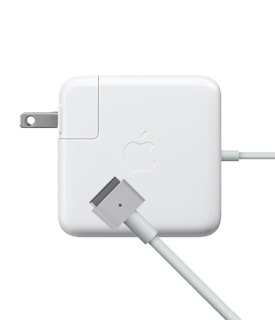

Or it could just be heat causing the plastic to discolor. It looks like that is what is happening on the plastic around the pins in your connector. That vaporized metal lands on whatever is nearby, causing black sooty marks. That makes the connection even weaker and smaller. When it sparks, it vaporizes some of the metal. With a sufficiently dirty, damaged, or loose connection, it will spark through the dirt or the air gap. When electricity is forced to go through a dirty connection, or through wires that are too small, it heats those things up. The heating is because of a weakened electrical connection. Clean the pins on the power cable, and the macbook with alcohol.
#2015 apple macbook air charger mac
If you happen to add another MagSafe Mac to your “stable” this charger will work regardless of the power requirements.Īlso this may be caused by (or exacerbated by) dirty contacts. So, since that’s a MagSafe 2 adapter, get the 85W charger. But, either way, you need to get a new adapterĪnd as adapters go, get the one with the highest wattage as you can always use a charger with wattage greater than or equal to what the device requires but not the other way around. To be completely thorough, I must say it could damage your logic board, but that’s highly, highly unlikely. If the charger happens to burn this board up, it’s a cheap and easy fix to replace itīoth of these are more inconvenient than expensive. The good news is these vintage Macs has a separate board that interfaced with the MagSafe before sending power to the logic board.

This is moot because you should be getting a new one anyway charger may fail meaning you can no longer charge and you have to buy a new one.

When components get hot, it’s because something failed and now too much current is flowing through something.Īs bad as this sounds, your potential damage is limited. There’s a small IC in that adapter that communicates with the Mac to identify it as having whatever wattage your charger is rated at. I would recommend getting a new charger to minimize damage and/or down time. Those are definitely the “high voltage” pins, if you consider 18V DC “high voltage.”


 0 kommentar(er)
0 kommentar(er)
